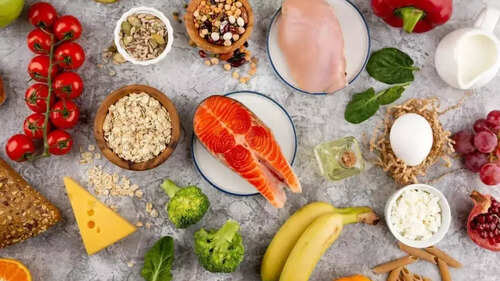Vitamin D, often called the “sunshine vitamin,” is essential for keeping your body strong and healthy. It plays a crucial role in helping your body absorb calcium and phosphorus, supports muscle function, boosts immunity, and even affects your mood. Despite its importance, many Americans don’t get enough vitamin D — even those who spend time outdoors. Low levels of this vitamin can impact bone strength, immunity, and overall well-being.
While supplements can help, one of the most effective ways to naturally improve your vitamin D levels is through your diet. Certain foods contain vitamin D or help your body absorb it more efficiently. Here’s a guide to 10 foods that can help, along with tips on when and how to eat them for best results.
- Fatty Fish (Salmon, Mackerel, Sardines, Trout)
Fatty fish are among the richest natural sources of vitamin D. Wild-caught salmon, for instance, can provide several hundred International Units (IU) per 100 grams. Mackerel and sardines are also excellent options.
How to eat: Include two servings of fatty fish per week, around 100–150 grams each. Grill salmon with roasted vegetables, toss sardines on whole-grain toast, or make a trout salad.
Timing: Eat these during main meals as the natural fats in the fish help your body absorb vitamin D more effectively.
- Cod Liver Oil
Cod liver oil is a concentrated source of vitamin D as well as omega-3 fatty acids, which support heart and brain health. It’s an old-fashioned supplement but highly effective.
How to eat: Take it with meals that contain fat. A small teaspoon daily can make a significant difference, but follow the dosage instructions on the bottle.
- Egg Yolks (From Free-Range or UV-Fed Hens)
Eggs are a convenient and versatile source of vitamin D. The vitamin is present in the yolk, so it’s important to eat the whole egg. One yolk provides about 40 IU of vitamin D.
How to eat: Make a veggie omelet for breakfast, or add soft-boiled eggs to salads or grain bowls. Pairing with a little healthy fat, like olive oil or avocado, helps your body absorb the vitamin better.
- UV-Exposed Mushrooms
Some mushrooms can naturally produce vitamin D2 when exposed to ultraviolet light. Varieties like maitake or portobello are good options.
How to eat: Look for mushrooms labeled “UV-exposed” or “high vitamin D.” Use them in stir-fries, soups, or on sandwiches. Sauté them in olive oil to enhance absorption. Note that vitamin D2 is slightly less potent than D3, but it’s a good plant-based source.
- Fortified Dairy Products (Milk and Yogurt)
In the U.S., many dairy products are fortified with vitamin D. Drinking a glass of fortified milk or enjoying yogurt can help you meet daily requirements.
How to eat: Drink fortified milk with breakfast cereal or enjoy yogurt with fruit. Choose low-added-sugar varieties for a healthier option.
- Fortified Plant-Based Milks
If you avoid dairy, fortified plant-based milks like almond, soy, or oat milk are excellent alternatives. They’re often enriched with vitamins D and B12.
How to eat: Use fortified plant-based milk in smoothies, coffee, or with cereal. Pair with a fat source, such as nut butter, to improve absorption.
- Fortified Orange Juice and Cereals
Some brands of orange juice and breakfast cereals are fortified with vitamin D. These options can be particularly useful for vegans or those who get limited sunlight.
How to eat: Check labels for vitamin D fortification. Pair fortified cereals with fortified milk or plant milk for a double boost. Avoid high-sugar cereals, and consider using fortified juice occasionally instead of daily.
- Beef Liver and Other Organ Meats
Beef liver is rich in vitamin D and other nutrients like iron and vitamin A. A 3-ounce serving can provide roughly 42 IU of vitamin D.
How to eat: Include liver in stir-fries or pâtés once per week. Keep portions moderate, as liver is nutrient-dense and high in vitamin A.
- Cheese (Fortified or Naturally Rich Varieties)
Certain cheeses contain vitamin D naturally, while some are fortified. Cheddar and Swiss are good options.
How to eat: Add cheese to sandwiches, salads, or enjoy with whole-grain crackers. Opt for lower-fat options if you’re watching saturated fat intake.
- Healthy Fats to Improve Absorption
Vitamin D is fat-soluble, which means it’s better absorbed when eaten with fat. Healthy fats like olive oil, avocado, nuts, and the natural fat in oily fish help your body make the most of dietary vitamin D.
How to eat: Add olive oil to salads, include avocado in meals, or snack on a handful of nuts along with vitamin D-rich foods. This simple pairing can significantly improve absorption.
Final Thoughts
Vitamin D deficiency is common, even in sunny states. While supplements are an option, incorporating vitamin D-rich foods into your daily diet is a natural, sustainable approach. Fatty fish, egg yolks, UV-exposed mushrooms, fortified dairy and plant-based products, liver, and cheese all contribute to higher vitamin D levels. Combining these foods with healthy fats enhances absorption and supports stronger bones, better immunity, and overall wellness. Small, consistent dietary changes can make a big difference in maintaining healthy vitamin D levels every day.

